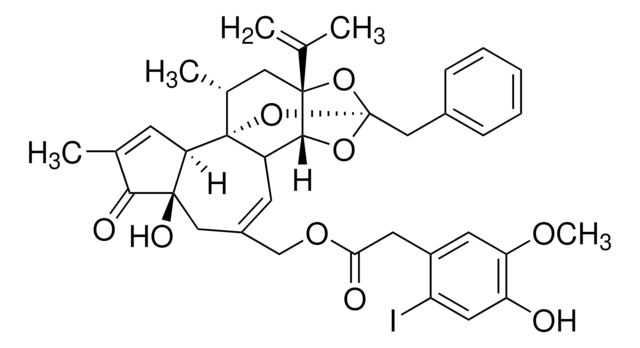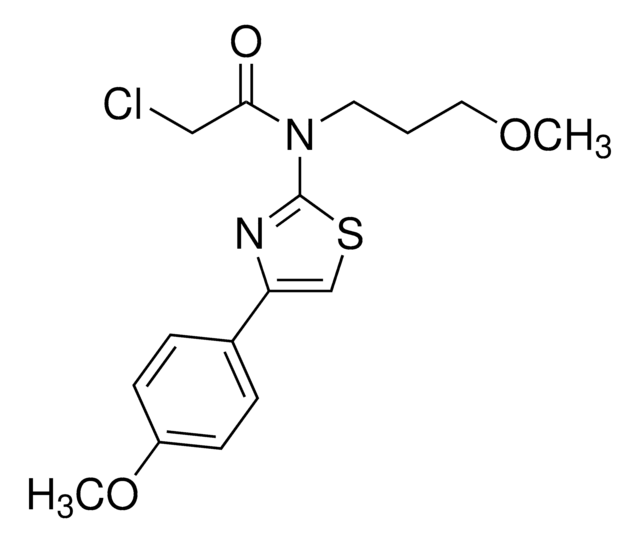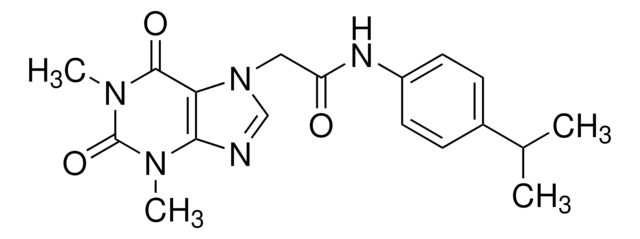R8756
Resiniferatoxin
from Euphorbia poisonii, ~95%
About This Item
Productos recomendados
biological source
Euphorbia poisonii
Quality Level
assay
~95%
storage temp.
−20°C
SMILES string
[H][C@@]12C=C(C)C(=O)[C@@]1(O)CC(COC(=O)Cc3cc(O)cc(OC)c3)=CC4[C@H]5O[C@]7(Cc6ccccc6)O[C@]5(C[C@@H](C)[C@]24O7)C(C)=C
InChI
1S/C37H40O9/c1-21(2)35-17-23(4)37-29(33(35)44-36(45-35,46-37)19-24-9-7-6-8-10-24)14-26(18-34(41)30(37)11-22(3)32(34)40)20-43-31(39)15-25-12-27(38)16-28(13-25)42-5/h6-14,16,23,29-30,33,38,41H,1,15,17-20H2,2-5H3/t23-,29?,30-,33-,34-,35-,36-,37-/m1/s1
InChI key
IKYCZSUNGFRBJS-PMIKMUNESA-N
Gene Information
rat ... Trpv1(83810)
Application
- for complex preparation for cryo-electron microscopy structural studies
- to test its effect towards immune responses to P. aeruginosa in sensory neurons associated with the cornea
- to study its effects in the denervation of the peripheral sensory nerves in psoriatic mice
Biochem/physiol Actions
signalword
Danger
hcodes
Hazard Classifications
Acute Tox. 3 Oral - Skin Corr. 1A
Storage Class
6.1C - Combustible acute toxic Cat.3 / toxic compounds or compounds which causing chronic effects
wgk_germany
WGK 3
flash_point_f
Not applicable
flash_point_c
Not applicable
ppe
Eyeshields, Faceshields, Gloves, type P3 (EN 143) respirator cartridges
Certificados de análisis (COA)
Busque Certificados de análisis (COA) introduciendo el número de lote del producto. Los números de lote se encuentran en la etiqueta del producto después de las palabras «Lot» o «Batch»
¿Ya tiene este producto?
Encuentre la documentación para los productos que ha comprado recientemente en la Biblioteca de documentos.
Los clientes también vieron
Nuestro equipo de científicos tiene experiencia en todas las áreas de investigación: Ciencias de la vida, Ciencia de los materiales, Síntesis química, Cromatografía, Analítica y muchas otras.
Póngase en contacto con el Servicio técnico









